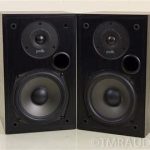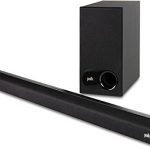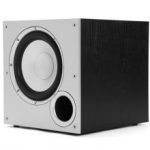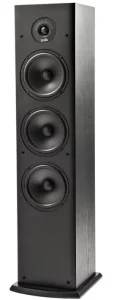
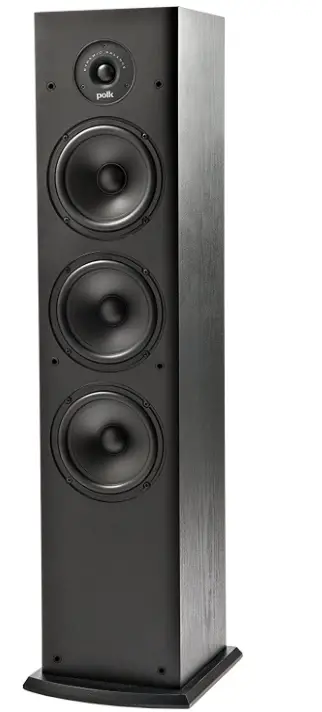
Polk Audio T50 150 Watt Home Theater Floor Standing Tower Speaker

Specifications
- Product Dimensions
8.75 x 7.75 x 36.25 inches - Item Weight
20.4 pounds - Batteries
1 Lithium-Ion battery - Speaker Amplification Type
Passive - Speaker Connectivity
Wired - Speaker Nominal Output Power
50 Watts - Material
Wood - Speaker Maximum Output Power
150 Watts - Driver Complement
6.5″ Diameter
6.5″ Bass Radiator (x2) - Electrical
38Hz – 24kHz - Amplifier Power
90 dB - Enclosure Type
Bass Reflex - Brand
Polk Audio
Introduction
T-Series speakers are perfect for building your first home theater or stereo listening system, whether you have a small room, or just want a great value-priced speaker for multi-room applications. T-Series speakers reproduce sound accurately with impressive volume. They’re solidly built and come in a black wood grain finish. Best of all, simply add a PSW Series-powered subwoofer yourself with real home theater performance.
Not your typical floor-standing tower speaker, the T50 stands out. Take a look beneath the hood by simply removing the grill; you’ll be amazed. Two performance tuned front-firing sub-bass radiators, one 6.25″ extended throw composite driver, and one 1″ silk dome tweeter, all developed with Polk’s exclusive Dynamic Balance technology, give the bass you seek a significant increase even at the lowest frequencies. Its audio has been updated, signed, sealed, and delivered by the people, for the people! Connects to the majority of home theatre processors, receivers, and stereos and supports Dolby and DTS. Play and have fun, but get ready to be amazed.
Polk Audio was founded in Baltimore in 1972 by Johns Hopkins University graduates, Matthew Polk and George Klopfer. Today, Polk Audio is a leading manufacturer of high-quality home, car and multimedia and the largest audio brand of Sound United. Polk products emphasize superior sound and build quality, and feature many patented and award-winning innovations. Having built their reputation as “The Speaker Specialists” for more than 40 years, Polk products are sold throughout the USA, Canada and in more than 50 countries around the world. Polk Audio’s mission is simple: Build high-quality, great-sounding speakers at affordable prices. For the people of Polk Audio, building speakers is not just a job—it’s a passion.
Important Notice
Please find the serial number located on the back of the product. It’s a good idea to write this number on the warranty sheet and put it in a safe place should you need to reference it later.
Prior to Using Equipment
Polk Audio thanks you for your purchase. Make sure to read this user guide in full before using your speaker system. It will ensure that you get the most from the product and understand all safety requirements. Once you’re done reading the user guide, put it in a safe place for later reference. To avoid damaging your speaker from input overload, please note the following:
- Don’t supply power to the speaker system that exceeds its maximum input
- Always make sure the amplifier is turned off when you connecting or disconnecting cables
- If you’re using a graphic equalizer to highlight those high and low frequencies, avoid excessive amplifier volume
- Never leave your speaker playing unattended.
How to Connect Your System
To get the best sound quality, it’s important to wire your speakers correctly.
How to Use Binding Post Connectors
Loosen hex nut and insert bare speaker wire through the hole. Tighten the hex nut down to make the connection.
Note
Do not insert an insulated section of wire into the hole (you will not get a connection).
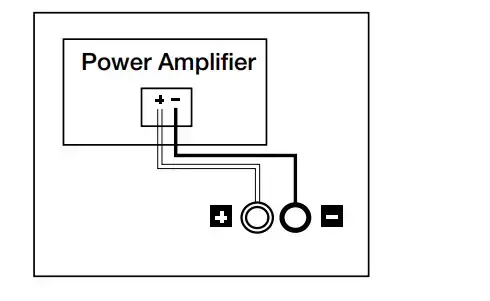
Basic Speaker Hookup
Make sure that the red (+) and black (-) connectors on your amplifier or receiver connect to the red (+) and black (-) connectors on your speakers. If your speakers sound “thin,” with little bass and little or no center image, odds are that one of the speaker wires is connected backward. Double-check all connections.
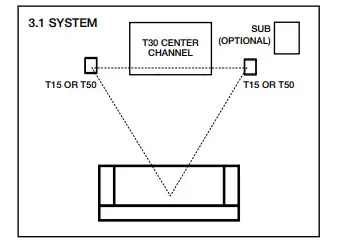
Placement Recommendations for the T30 Center Channel Speaker
The most popular placement for your T30 center channel speaker is on a shelf below your flat screen TV (if you have an older box TV, a popular option is to place your center channel speaker on top of it, anchoring the dialogue and effects to the screen).
Processor Mode for the T30 Center Channel Speaker
Note: Set Center Channel Speaker to “small” in your receiver’s Bass Management Settings.
The “bass management” or “speaker configuration” menus of most surround receivers offer the choice of “normal” or “wide” modes for center channel operation. In discrete channel digital processors, these modes are referred to as “small” and “large.” Normal (small) mode filters bass frequencies from the center channel speaker and sends them instead to the front left and right main speakers or to the subwoofer output (LFE) jack. Wide (large) mode sends an unfiltered, full-range signal to the center channel speaker. Use the Small (normal) mode for optimum center (and surround) channel performance and reliability.
T Series Speaker Positioning
To maximize the sound quality of your Speaker system— whether you’ve purchased T15 Bookshelf Speakers, a T30 center channel speaker, or T50 tower speakers—correct placement is everything. Take a look at the following examples and give them a try based on the T Series speakers you’ve purchased.
Note
Your T Series speakers are compatible with 2.0, 2.1, 3.1, 5.1, 7.1 and 9.1 setups (optional subwoofer shown in graphics).
Listening in 3.1 System (T15, T30, T50)
Get the most realistic stereo image by placing speakers as far apart as the listeners are sitting from them. If room conditions require that you place the speakers farther apart, you may choose to angle the speakers toward the middle to support a more solid center image.
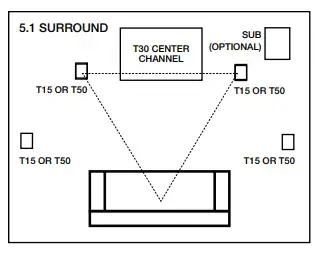
Listening in 5.1 Surround (T15, T30, T50)
You can use the T Series speakers as rear surround speakers in a Polk Audio home theater system. Ideal rear channel surround speaker placement is on a side wall, slightly behind and above the listening position.
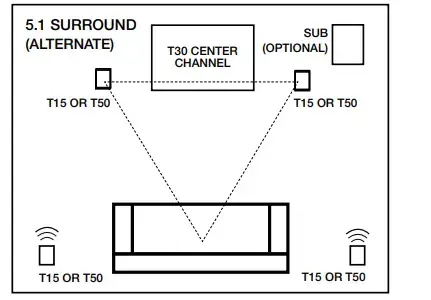
Listening in 5.1 Surround—alternate option (T15, T30, T50)
Alternate rear channel surrounds speaker placement for T Series speakers. If you cannot place rear surrounds on the side walls, position them on the rear wall above the listening position.

Wall Mounting the T15 Bookshelf Speaker
The T15 features a built-in keyhole slot for easy wall mounting. Follow the steps below to safely wall mount these speakers.
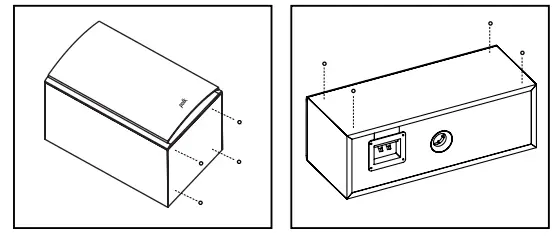
- Use the template to mark the mounting location
- Use #10 pan head screw for wall stud.
- Use #10 wall anchors with appropriate weight rating and screws for no wall stud
- leave screws 1/4″ – 1/8″ (4mm) exposed
- Slide the speaker down on the screw head to catch the keyhole slots
Adding Adhesive-Backed Rubber Feet to the T Series
To keep your Polk speakers firmly in place and prevent damage to floors or furniture, it’s a smart idea to attach the included adhesive-backed rubber feet to the bottom of your speaker.
 Peel and stick in the corners of the speaker enclosure
Peel and stick in the corners of the speaker enclosure
Cleaning Your Polk Speakers
You bought Polk quality for a reason. Keep your speakers looking good for years to come with these simple tips.
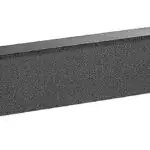
Clean the cabinet with a damp cloth. Do not use furniture polish on the veneer.
Frequently Asked Questions
- Speaker impedance and frequency response?
8 Ohms each, 60 – 24,000 Hz response but without a decibel variation or a response curve that is meaningless. They do say the -3db useful low end is 65 Hz. Over all it is a good value for use in a small room like a small bedroom or computer office say about 10′ x 10′. I play mine with “loudness” on and have the bass turned up a bit to give a nice balanced sound on most material. These would obviously benefit from being paired with a subwoofer, but they are still adequate even without for normal listening. You’d have to spend at least double the money to get much better speakers. Note that oftentimes through the year, Amazon and Best Buy will have these on sale for about $49 for the pair, which is when I bought mine, so obviously THAT makes them an even better deal. I’ve compared a lot of small bookshelf speakers and to my ears, you’d have to get some Boston Acoustics at $250 for the pair to offer anything much better than these, but you may wish to compare them to others by Klipsch and JBL. But really, when I got them for $49 I was VERY happy with them and how they have grown on me after I broke them in for a few hours. Do be aware that playing them overly loud can result in some “noise” or “rattle” from pushing the little 5.25″ woofer too hard. You just need to use some common sense and have realistic expectations for such small speakers in terms of volume. - Should I set this speaker to “Small” or to “Large” in my receiver? My Yamaha RX-V581 automatic calibration sets this to Large.
So this depends on your receiver. I realize this is an old question, but could be helpful for others. Many receivers have the speaker size selection and many newer (last several years) receivers may also allow you to tweak your crossover settings for each set of speakers. Basically, what that means is that if your sub crossover is set at 150 hz, you want your other speakers to pick up the frequency where the sub left off. So you would want your other speakers to “crossover” at 150 Hz. This means that those speakers will play frequencies from 150 hz and higher. If you set your sub for 80 Hz and your other speakers at 150 Hz, you’ll miss all of the sounds between 80 and 150. All that to say, if you set your speakers to small, you’ll want to look in your receiver manual to see what the low-frequency cut-off is so you know what to set your sub crossover at. This way, you won’t lose part of your sound. - Do you need a receiver to use these? or can i just hook up to my tv?
I have seen TVs that have speaker outputs, but it’s pretty rare. If your TV has those, they’d be labeled “External Speakers” or something like that. Otherwise, you need a receiver or at least an amplifier. - How tall are these speakers?
The Polk T15 is a little over 10.5 inches tall. - Does it have a built-in amplifier?
No- this one does not. However, you can purchase the amplifier upgrade for this speaker, separately, to match the sound output. - If these can hit 38Hz, do I still need a subwoofer?
Placement is very important, especially with these speakers. They are designed yo work better when they are placed 20 or so degrees above or below ear level. For better bass you should place them closer to the ground. Also, note indeed they will produce sound at the listed frequencies, but that does not mean it will produce that frequency at a loud volume. The bass speakers in the T15 is wonderful, but it is small. And may not produce the loud bass sound some prefer. That’s why I mentioned placement. In the end, after u play them, break them in a bit, try different locations, if you are not satisfied with the bass, look for a subwoofer. - Does it come as a pair?
Yes, it comes with a pair, (2) speakers. - These Polk t50 speakers are compatible with Yamaha RXV 385 receiver?
Yes it will. Your Yamaha RX V385 receiver will take speakers that are 6 ohms and above. Let me say from experience that you’re better off NOT BUYING the POLK T50s because they do not have 4 active speakers. They have 1 tweeter, 1 full-sized woofer and 2 passive radiators. Passive radiators look like real speakers, but are not powered and only serve to exaggerate the bass in a different way than ports would. You’re better off going with Pioneer by Andrew Jones or for even less money and a better sound Dayton Audio Towers because these options have more than one active woofer.
- Does anyone have these speakers in a total 5.1 setup?
Yes. These are the rear speakers in my 5.1 setups. - Are these speakers good for creating music in the studio? or mostly for tv purposes?
Sorry if I sound dumb, but I do not know what you mean by, “in-studio”… I listen to a lot of music, and do not know what you are referring to… these speakers are compact and heavy, and well constructed, they play music and televised programming, excellently, with good, clear, and powerful sound. it will not play the loud super bass rap crap, as this is not what they are.
View Fullscreen
